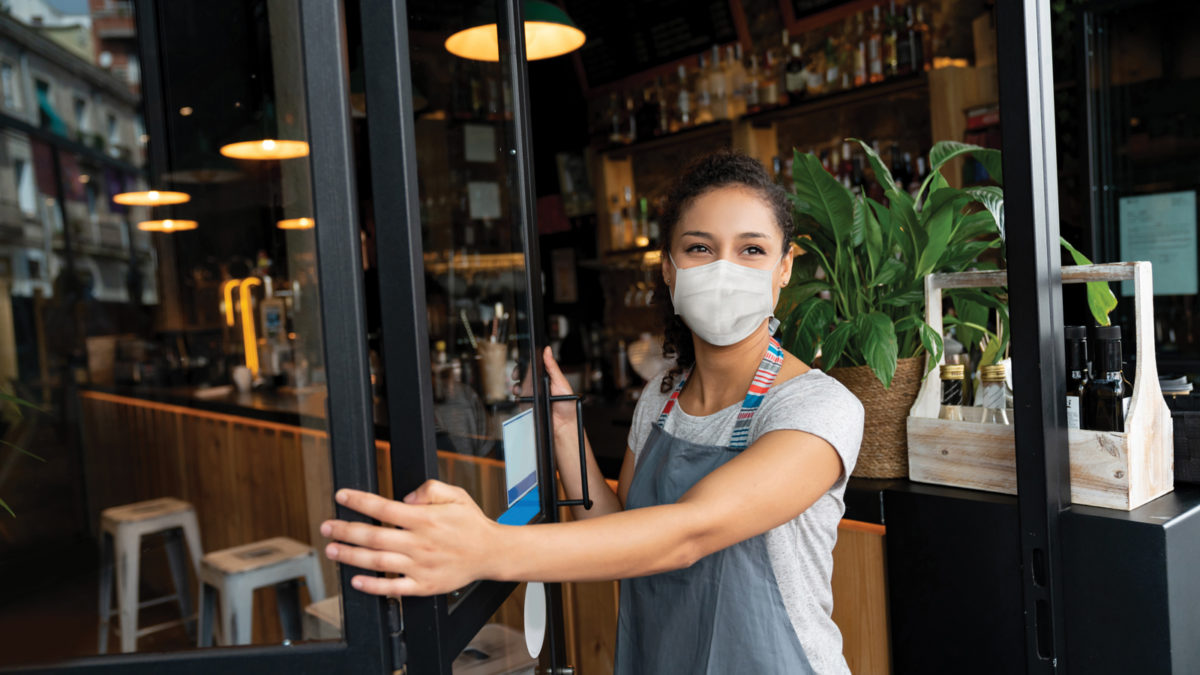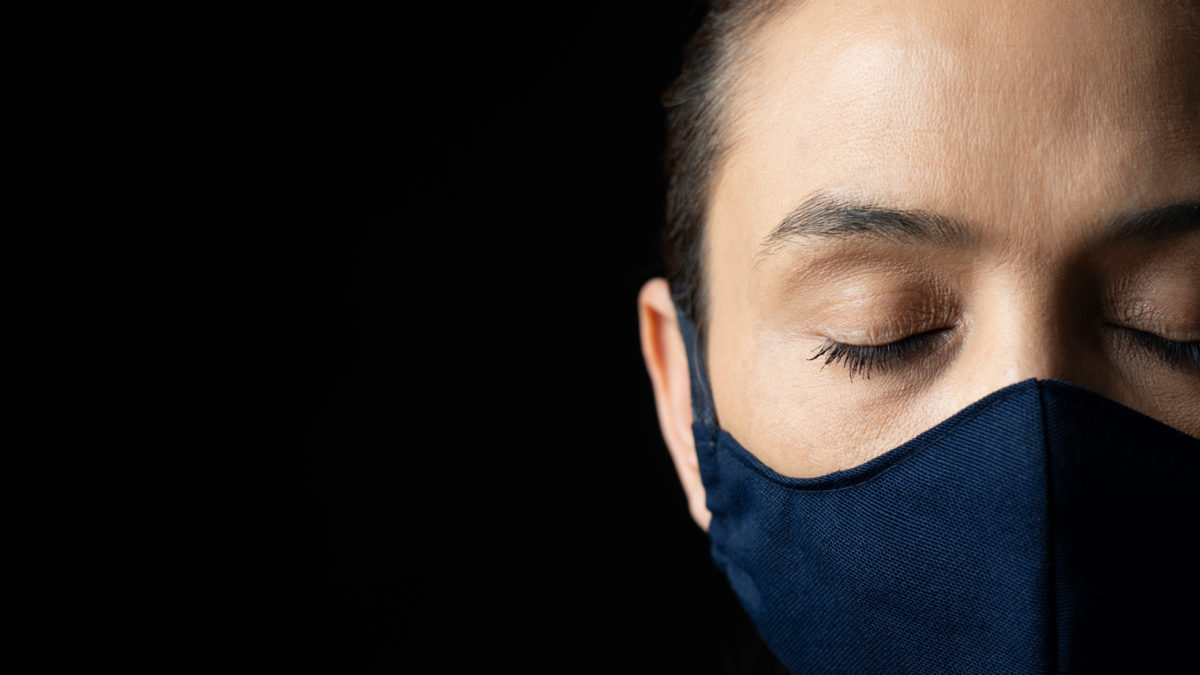
Survey of COVID-19 Insurance Issues—Part 2
Workers’ Compensation
October 2020

This article surveys insurance issues arising from the COVID-19 pandemic. This Part 2 focuses on workers’ compensation matters.
Part 1 of this article considered insurance issues related to business income interruptions arising from the COVID-19 pandemic. This Part 2 discusses workers’ compensation claims for COVID-19. It focuses on challenges that employees will likely face in establishing that their disease is work-related and offers strategies to overcome these hurdles. The article also includes suggestions for employers faced with these claims.
Because workers’ compensation insurance coverage is controlled by the Colorado Workers’ Compensation Act (Act),1 Colorado policies for this coverage are more uniform than the commercial property insurance policies discussed in Part 1. However, even in the context of workers’ compensation, forms and language may differ from insurer to insurer and from policy to policy, so it remains critical to review each policy in its entirety.2
Is COVID-19 an Occupational Disease?
The general rule under the Act is that an occupational disease is likely compensable if it can be fairly traced to employment. In other words, employees who are able to show that they contracted COVID-19 in the course of their employment should be able to obtain coverage. But proving this may be difficult.
The Act allows workers to receive benefits for “occupational diseases,” which are diseases that can be fairly traced to the conditions of the claimant’s employment.3 For an occupational disease to meet this work-related test, a worker must establish that the disease
- resulted directly from the employment or work performed,
- can be seen to have followed as a natural incident of the work and as a result of the exposure occasioned by the nature of the employment,
- can be fairly traced to the employment as a proximate cause, and
- does not come from a hazard to which the employee would have been equally exposed outside the work environment.4
Some common forms of occupational disease include
- repetitive motion diseases, such as tendonitis5 and carpal tunnel;6
- chronic back or joint pain caused, or aggravated by, repeated lifting or squatting;7 and
- conditions brought about by long-term exposure to hazardous chemicals or other harmful particles.8
Whether COVID-19 is considered an occupational disease may be driven in part by the profession at issue. For example, those employed in certain high-risk professions, such as healthcare workers and first responders, may be more likely to prevail in COVID-19 coverage disputes. These professions generally require stricter recordkeeping and more virus testing than others, and due to the amount of human contact they involve, it is more likely that virus exposure in these professions is work-related.9
An occupational disease does not have to be one uniquely associated with the employment.10 Coverage may also be triggered if an employee has COVID-19 and the condition was contracted either at the place of employment or through employment-related travel, provided the employee did not contract COVID-19 while on a personal detour.11
Instructive Precedent
While the potential impact of COVID-19 on workers’ compensation is largely unprecedented, decisions from other jurisdictions involving coverage for other communicable diseases are instructive. For example, the Supreme Court of Minnesota, in Olson v. Executive Travel MSP, found that an employee who became infected with a novel strain of influenza while traveling in Asia for work and later developed chronic bronchitis as a result of the influenza was entitled to workers’ compensation benefits.12 The claimant was able to establish that she contracted Influenza-type B during her work travel to Asia because that specific virus was not present in the United States when she contracted it.13
Proving that COVID-19 was contracted at a place of employment or through associated travel may be more difficult compared to other communicable diseases. Unlike the flu virus at issue in Olson, SARS-CoV-2 is widely distributed across the United States. Further, in most cases, tracing virus exposure to an employee’s employment as a proximate cause of the disease requires a medical opinion.14
Tracking Methods
Tracing the source of exposure to highly communicable diseases such as COVID-19 may also require the use of techniques like contact tracing and genome mapping. Contact tracing involves tracking down individuals who have had recent prolonged or intimate exposure to a person who has been confirmed to be COVID-19 positive when such person may have been infectious.15 While the United States has yet to widely use contact tracing in its fight against COVID-19 spread, other countries such as South Korea and New Zealand have successfully used this technique to control outbreaks.16
While contact tracing may not be a practical means for all individuals to trace the source of their exposure, it may be useful where the individual has had limited contact with others. Contact tracing may also be used by insurers seeking to deny coverage to show that a claimant was exposed outside of work. Although it remains to be seen whether contact tracing could be an effective tool in these types of claims, it is possible that Colorado will, eventually, implement the robust contact-tracing measures necessary to effectively track COVID-19 spread. Colorado is in the process of hiring additional contact-tracers so that the system will be able to handle up to 500 cases a day.17
Genome mapping also provides some promise to track COVID-19 spread on a granular level. This approach involves tracking the virus’s mutations. Because viruses mutate so rapidly, scientists have been able to identify distinct COVID-19 strains. For example, scientists were able to identify three distinct strains of the virus around Seattle, which allowed them to determine that the first person infected in Seattle had been infected in China and passed the virus to at least one other person in Washington. Scientists reached this conclusion because the virus passed on was highly similar genetically to the sample taken from the man who had been infected in China, unlike other strains that were circulating in the area.18 Using the same technique, scientists likewise determined that the two other strains had passed through either Europe or Iran before arriving in Washington.19
Reporting Requirements for COVID-19 Claims
The Act requires employees to describe a “reportable” occupational disease, in writing, to employers within four calendar days, even if the employers have actual knowledge of the illness.20 An occupational disease becomes “reportable” when it requires medical attention, time off work, or both; such illness would still be reportable even if it has yet to be diagnosed as COVID-19.21 If an employee fails to report the injury in writing, the employee may lose up to one day’s wage compensation for each late reporting day.22
Even if the employee does not believe the exposure was work-related, according to the Centers for Disease Control and Prevention (CDC) guidelines, both employees and employers should clearly document any and all possible COVID-19 exposures.23 Employees should also record whether their employer provided personal protective equipment (PPE), as well as any additional relevant information. Employees beginning to experience COVID-19-related symptoms should first seek immediate medical attention, including testing. Employees who have tested positive for COVID-19, or have other reason to believe they have been infected, should immediately report their diagnosis and/or symptoms to their employers. They should also provide documentation related to any potential exposures.
After reporting the illness to the employer, employees should request to see a doctor. If a doctor is not available through the employer’s workers’ compensation system, employees should report any possible exposures and symptoms to their personal doctor. Employees should carefully document all circumstances relating to seeing a doctor and/or getting appropriate testing. If the employee’s doctor believes the employee has COVID-19 but cannot arrange for testing, the employee should ask the doctor to state this in the medical report, as well as other relevant information regarding possible exposure, symptoms, and testing.
While employees must report an illness requiring medical attention or time off work within four days, employees must also provide written notice of the contraction of an occupational disease (e.g., a COVID-19 diagnosis) within 30 days after the employee first experiences symptoms or, if the disease results in death, it must be reported within 30 days of death.24 If these reporting requirements are not met, the claim may be deemed waived or the compensation may be reduced.25
Workers’ Compensation Coverage for Expenses
Absence from work during the quarantine/monitoring period, but before a positive confirmation of COVID-19, may trigger coverage under workers’ compensation, even if the employee ultimately tests negative.26 However, whether such benefits are available is determined by the insurer and may be limited to certain high-risk professions. Pinnacol Assurance, a Colorado-chartered workers’ compensation provider covering about 60% of Colorado businesses, has indicated that it will provide wage loss benefits for first responders and healthcare workers for up to 14 days of required quarantine that occurs due to the nature of their jobs.27 Some municipalities are providing similar benefits—in many cases, outside the traditional workers’ compensation system—to first responders and other municipal workers. As with insurers, whether employers provide these types of non-statutory benefits depends on that employer’s specific policies.
Unless the insurer (or employer) has pledged additional coverage, Colorado law requires employers and their insurers to provide all medical benefits that are reasonably needed at the time of injury or occupational disease and afterward to cure and relieve the injury’s effects.28 This includes medical services that are medically necessary for the treatment of a claimant’s injuries, as well as any services incidental to obtaining such treatment, such as transportation expenses incident to authorized medical treatment.29
Indemnity benefits, including lost wages, are also payable for occupational diseases that either completely or partially prevent an employee from working,30 provided the employer does not continue to pay wages at a higher rate than the temporary total or temporary partial benefit amounts provided under workers’ compensation laws.31 However, if the employer deducts the employee’s sick leave for that lost time, the employee remains entitled to statutory lost-wage benefits.32 Although this article’s focus is limited to the Colorado Act, private employers should also consider the quarantine/monitoring period covered under the Families First Coronavirus Response Act33 and other federal programs.
Conclusion
Proving that COVID-19 is an occupational disease subject to coverage under the Act may be difficult. And as discussed in Part 1, it is hard to predict how courts will end up deciding the largely unprecedented issues surrounding the COVID-19 pandemic. Employers and employees dealing with COVID-19 coverage claims should adhere to the Act’s requirements, follow CDC and other federal guidance, and be aware that coverage varies from policy to policy. In some cases it may be advisable to consult an attorney with significant experience handling these types of claims.
Related Topics
Notes
1. CRS §§ 8-40-101 et seq.
2. See generally Sandgrund et al., “Your First Insurance Policy Coverage Dispute,” 49 Colo. Law. 42 (Feb. 2020).
3. See CRS § 8-40-201(14).
4. Id.
5. See, e.g., Royal Globe Ins. Co. v. Collins, 723 P.2d 731 (1986) (finding that tendonitis caused by repetitive arm movements in assembling rifle scopes was an occupational disease).
6. Phillips and Phillips, Colorado Practice Series: Colorado Workers’ Compensation Practice and Procedure § 3.7 at 111 (2d ed. Thomson West 2005).
7. See, e.g., Hutchison v. Indus. Claim Appeals Office, 405 P.3d 458, 460 (Colo.App. 2017) (upholding administrative law judge’s findings based on the independent medical examiner’s opinion that “the occupational history repeated lifting and squatting over years is sufficient to meet the standard in the Colorado Workers’ Compensation Treatment Guidelines for aggravation of [osteoarthritis] on a work-related basis”).
8. See, e.g., Anderson v. Brinkhoff, 859 P.2d 819 (Colo. 1993) (finding that long-term exposure to dust and sawdust as a condition of employment aggravated claimant’s progressive emphysema and associated heart problems, and therefore, the aggravation of claimant’s disease was occupational in nature and compensable).
9. See Nguyen et al., “Risk of COVID-19 among frontline healthcare workers and the general community: a prospective cohort study,” medRxiv at 3 (May 25, 2020), https://www.medrxiv.org/content/10.1101/2020.04.29.20084111v6.full.pdf (“In a prospective study of 2,135,190 individuals, frontline HCWs [healthcare workers] may have up to a 12-fold increased risk of reporting a positive COVID-19 test. Compared with those who reported adequate availability of PPE, frontline HCWs with inadequate PPE had a 31% increase in risk. However, adequate availability of PPE did not completely reduce risk among HCWs caring for COVID-19 patients.”); Allen et al., “First Responders Face High Risk but Lack Supplies and Personnel to Combat Coronavirus,” ProPublica (Mar. 13, 2020), https://www.propublica.org/article/emergency-medical-responders-have-lacked-guidance-and-are-stretched-for-supplies-and-personnel-to-combat-coronavirus.
10. Phillips and Phillips, supra note 6 at § 3.7.
11. See Anderson, 859 P.2d at 824 (“Where there is only one cause of a disease the operation of the statute is clear—the risk, or hazard, of the disease cannot be equal to the risk experienced by the general public.”). See also Phillips Contracting, Inc. v. Hirst, 905 P.2d 9, 11 (Colo.App. 1995) (“An employee whose work requires travel away from the employer’s premises is held to be within the course of employment continuously during the trip, except when the employee makes a distinct departure on a personal errand.” (citing Emp’rs’ Liab. Assurance Corp. v. Indus. Comm’n, 363 P.2d 646 (1961)).
12. Olson v. Exec. Travel MSP, Inc., 437 N.W.2d 645 (Minn. 1989).
13. See id. at 646.
14. Phillips and Phillips, supra note 6.
15. Id.
16. De La Garza, “What is Contact Tracing? Here’s How It Could Be Used to Help Fight Coronavirus,” TIME (Apr. 12, 2020), https://time.com/5825140/what-is-contact-tracing-coronavirus.
17. See Ingold, “Why the end of Colorado’s stay-at-home order isn’t the end of you being stuck at home,” Colo. Sun (Apr. 22, 2020).
18. Hamilton, “How Genetic Mapping Is Allowing Scientists To Track The Spread Of Coronavirus,” NPR (Mar. 19, 2020), https://www.npr.org/2020/03/19/818518719/how-genetic-mapping-is-allowing-scientists-to-track-the-spread-of-coronavirus.
19. Id.
20. CRS § 8-3-102(1) to (1.5). See also Colo. Dep’t of Labor and Emp’t, Div. of Workers’ Comp. Emp’r’s Guide at 13 (Nov. 2011), https://www.colorado.gov/pacific/sites/default/files/Workers%27%20Compensation%20Manual.pdf.
21. Id.
22. Id.
23. See US Dep’t of Health and Human Servs., CDC, CDC Activities and Initiatives Supporting the COVID-19 Response and the President’s Plan for Opening Up America Again at 48, https://www.cdc.gov/coronavirus/2019-ncov/downloads/php/CDC-Activities-Initiatives-for-COVID-19-Response.pdf?CDC_AA_refVal=https%3A%2F%2Fwww.cdc.gov%2Fcoronavirus%2F2019-ncov%2Fcommunity%2Fhigh-risk-workers.html#page=50 (recommending, for example, that employers immediately notify local health officials, staff, and customers, if possible, of any possible cases while maintaining confidentiality consistent with applicable law; and inform those who have had close contact to a person diagnosed with COVID-19 to stay home, self-monitor for symptoms, and follow CDC guidance if symptoms develop).
24. CRS § 8-43-102(2) (“Written notice of the contraction of an occupational disease shall be given to the employer by the affected employee or by someone on behalf of the affected employee within thirty days after the first distinct manifestation thereof. In the event of death from such occupational disease, written notice thereof shall be given to the employer within thirty days after such death.”).
25. See id. (“Failure to give either of such notices shall be deemed waived unless objection is made at a hearing on the claim prior to any award or decision thereon. . . . If the notice required in this section is not given as provided and within the time fixed, the director may reduce the compensation that would otherwise have been payable in such manner and to such extent as the director deems just, reasonable, and proper. . . .”). However, this subsection also provides that “[a]ctual knowledge by an employer . . . of the contraction of [an occupational] disease . . . and of exposure to the conditions causing it shall be deemed notice of its contraction.” Id.
26. See Vendituoli, “Colorado’s largest workers’ comp insurer unveils two emergency policy changes regarding COVID-19,” Denver Bus. J. (Mar. 23, 2020), https://www.bizjournals.com/denver/news/2020/03/23/colorado-s-largest-workers-comp-insurer-unveils-2.html (“Colorado’s largest workers’ compensation insurer, Pinnacol Assurance . . . has promised to provide wage replacement benefits for [first responders and healthcare workers] for up to 14 days of required quarantine that occurs due to the nature of their jobs.”). See also Wash. State Dep’t of Labor and Industries, Workers’ Compensation Coverage and Coronavirus (COVID-19) Common Questions, https://lni.wa.gov/agency/outreach/workers-compensation-coverage-and-coronavirus-covid-19-common-questions (“When a claim is filed for probable exposure and the criteria under ‘when to file a claim’ are satisfied, the claim will be allowed for the quarantine period whether or not the worker actually contracted COVID-19.”). (“When a claim is filed for probable exposure and the criteria under ‘when to file a claim’ are satisfied, the claim will be allowed for the quarantine period whether or not the worker actually contracted COVID-19.”).
27. Vendituoli, supra note 26.
28. CRS § 8-42-101(1)(a).
29. Atencio v. Quality Care, Inc., 791 P.2d 7, 8 (Colo.App. 1990); Sigman Meat Co. v. Indus. Claim Appeals Office, 761 P.2d 265 (Colo.App. 1988).
30. See generally CRS §§ 8-42-105 (temporary total disability), -106 (temporary partial disability).
31. See Phillips, supra note 6 at 286 (citing West’s C.R.S.A. § 8-42-103(1)(b)).
32. CRS § 8-42-124(4) (“[W]hen the employer has charged the employee with any earned vacation leave, sick leave, or other similar benefits for any reason, the rights of the employee to receive direct payment of any award for temporary partial or temporary total disability that said employee may be entitled to on and after the effective date of such reduction shall be reinstated in accordance with the provisions of articles 40 to 47 of this title.”).
33. Pub. L. No. 116-127 (Mar. 18, 2020).
Coverage may also be triggered if an employee has COVID-19 and the condition was contracted either at the place of employment or through employment-related travel, provided the employee did not contract COVID-19 while on a personal detour.


